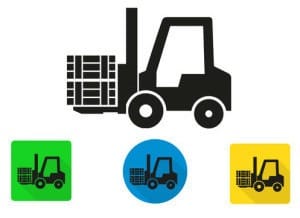
Predictive maintenance for lead-acid batteries in forklifts resulted in higher uptime, extended battery life, and reduced costs.
Name of Organization: ABT Power Management
Industry: Manufacturing
Location: Greensboro, NC USA
Business Opportunity or Challenge Encountered:
Forklifts are incredibly versatile machines, capable of operating in any industrial or distribution setting. They are capable of lifting thousands of pounds at one time. However, they have an Achilles’ heel – their electric power supplies. Without a working power supply, a forklift is dead in the water.
Forklifts run on batteries, and that means maintaining and replacing large quantities of batteries to ensure uninterrupted business operations on factory and warehouse floors. Predictably, this results in inefficient energy consumption, increased labor costs due to battery swapping, and unnecessary capital expenditures.
There is, however, a better way to perform forklift battery maintenance. A newly released Microsoft case study illustrates how Ken Fearn, founder of ABT Power Management, recognized that forklift customers needed more than a constant supply of batteries and chargers – they needed real-time monitoring and management of power requirements. This was a data problem, not a power supply problem.

Ultimately, ABT was able to monitor a subset of more than 5,000 assets in the field but began to exceed its ability to scale out cumbersome asset tracking, data collection, and reporting processes. The service company needed to move to a standardized, scalable remote monitoring system.
How This Business Opportunity or Challenge Was Met:
ABT decided to move to the cloud, adopting Microsoft Azure to enable the machine-learning, analytics, and integration capabilities the company needed to more effectively track and manage customers’ power requirements. The company worked with Microsoft as well as Mariner, a local IoT/advanced-analytics consultant, to create an enhanced remote-monitoring system with automated business intelligence and predictive analytics.
Employing the Azure IoT Suite, the company was able to “enable two-way communication between the cloud and local sites and provide identity management, insight into all the assets, tight security, and better streaming performance,” says Ryan Lynch, VP of corporate services for ABT.
The ABT Remote Automated Asset Management System (RAAMS) enables the company to keep watch over all its remote power supplies and analyze data from diverse sources. Launched in January 2016, RAAMS enables historical analysis and predictive diagnosis of more than 6,000 assets in a wide range of scenarios and operating conditions, connecting to thousands of sensors and monitoring multiple parameters that include the amount of charge time required, battery heat, and discharge and recharge voltage.
Measurable/Quantifiable and “Soft” Benefits From This Initiative:
ABT is using its real-time power monitoring and analytics capabilities to provide reports to the customer and real-time alerts to technicians. With automated alerts, ABT technicians can respond faster and avert potential downtime. The new platform can improve power management and uptime in 24×7 operations; environments with fully automated, unmanned vehicles; and even installations in extreme hot or cold temperatures. Results seen so far include an increase of battery life by 30 percent, reduced energy consumption, and lower costs.
The increased lifespan comes on top of the reduction customers gain when they take advantage of ABT’s GuaranteedPOWER services, which cut the number of batteries and power supplies required by more than 25 percent. “These batteries can cost anywhere from $5,000 to $8,000,” Lynch notes. “So you can imagine the dollar figures when they’re running 100 trucks.”
The solution also increases the productivity of field personnel. For example, lead-acid batteries require water to operate. In the past, ABT field technicians typically checked each battery weekly. “Now, we have a system that can predict when a battery needs water and route our people accordingly in real time instead of working to a fixed schedule,” says Fearn. “We can perform predictive maintenance, preempt downtime, and reduce the need for break/fix services.”





























